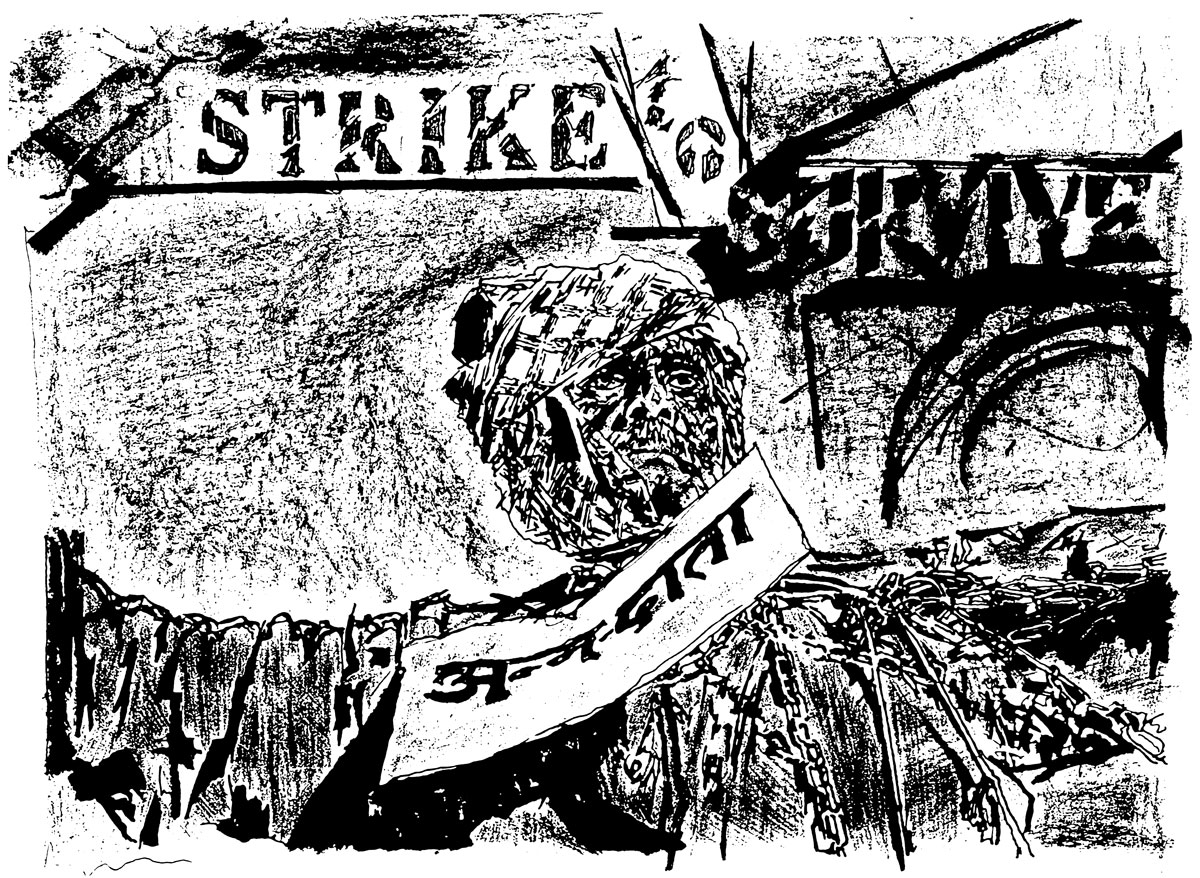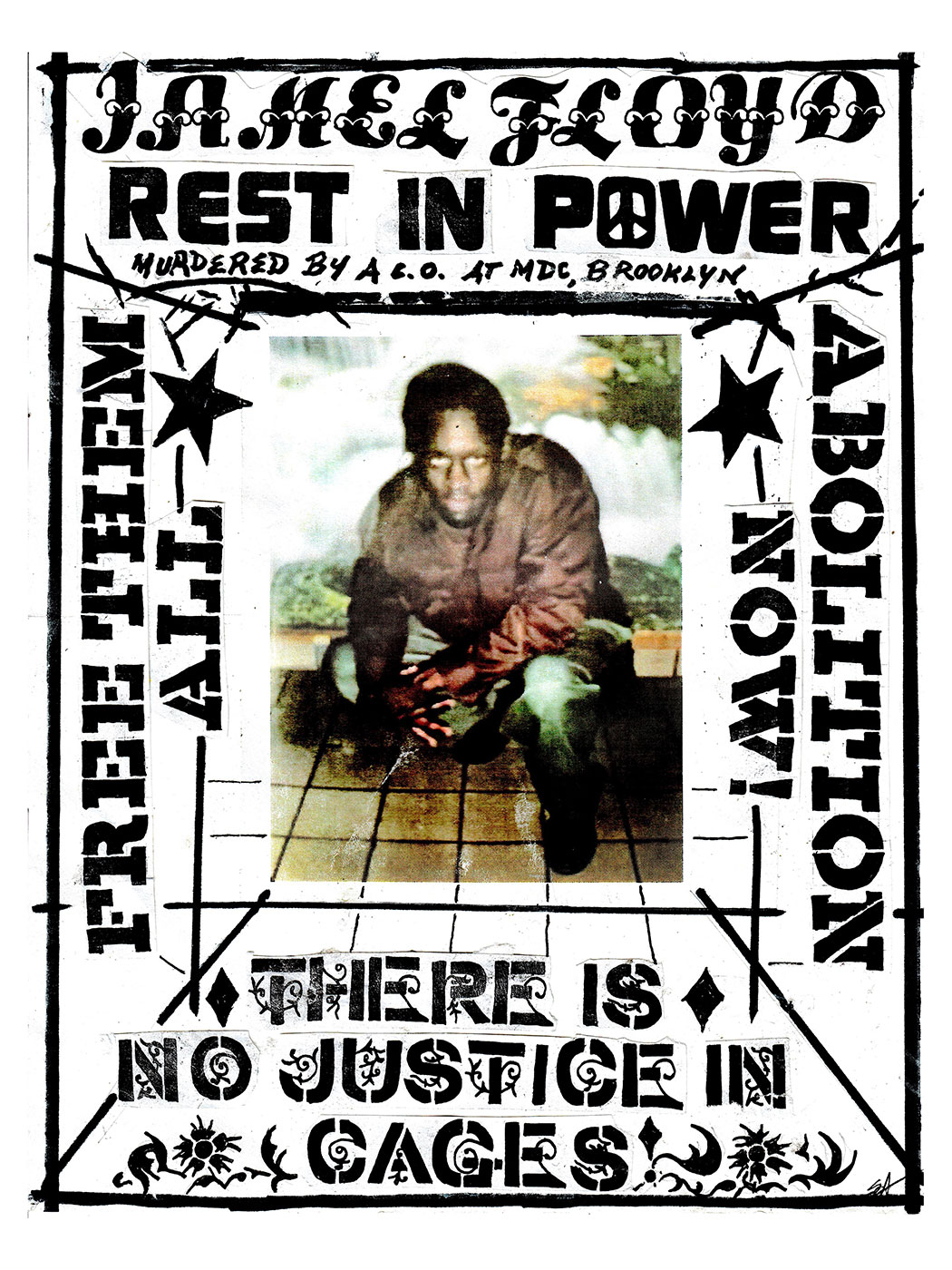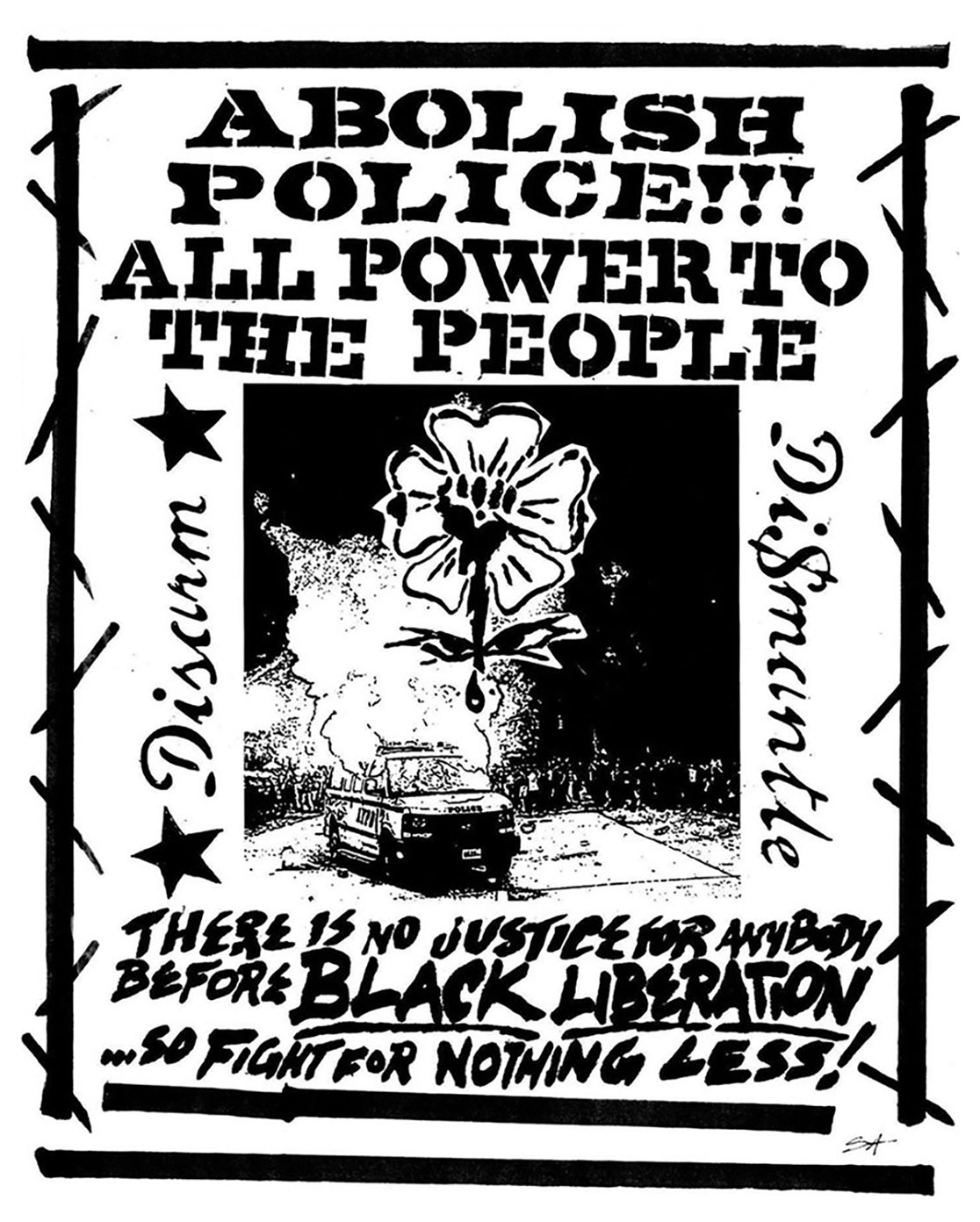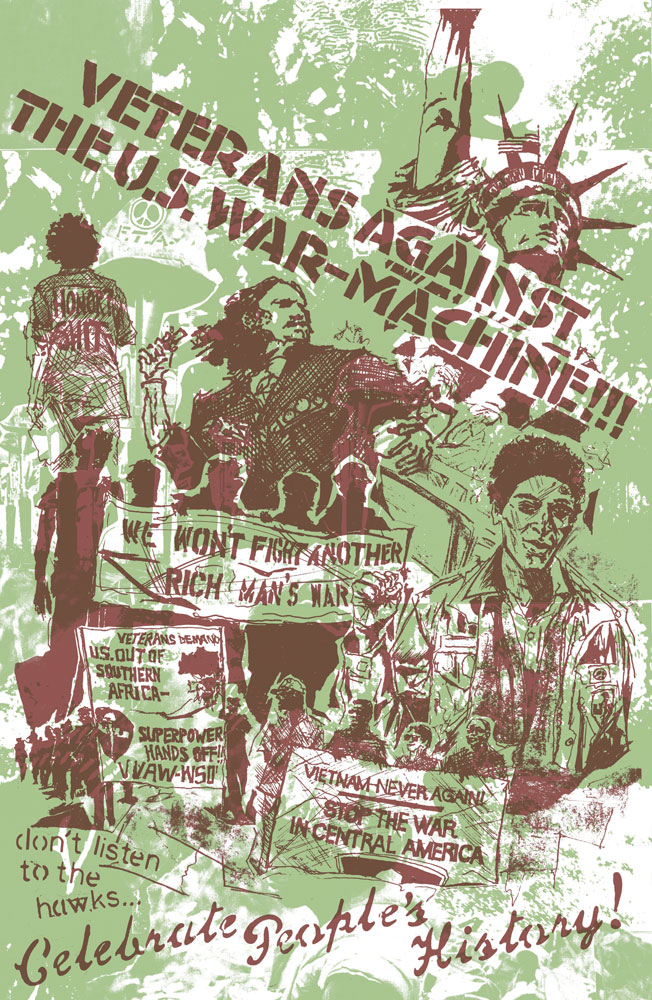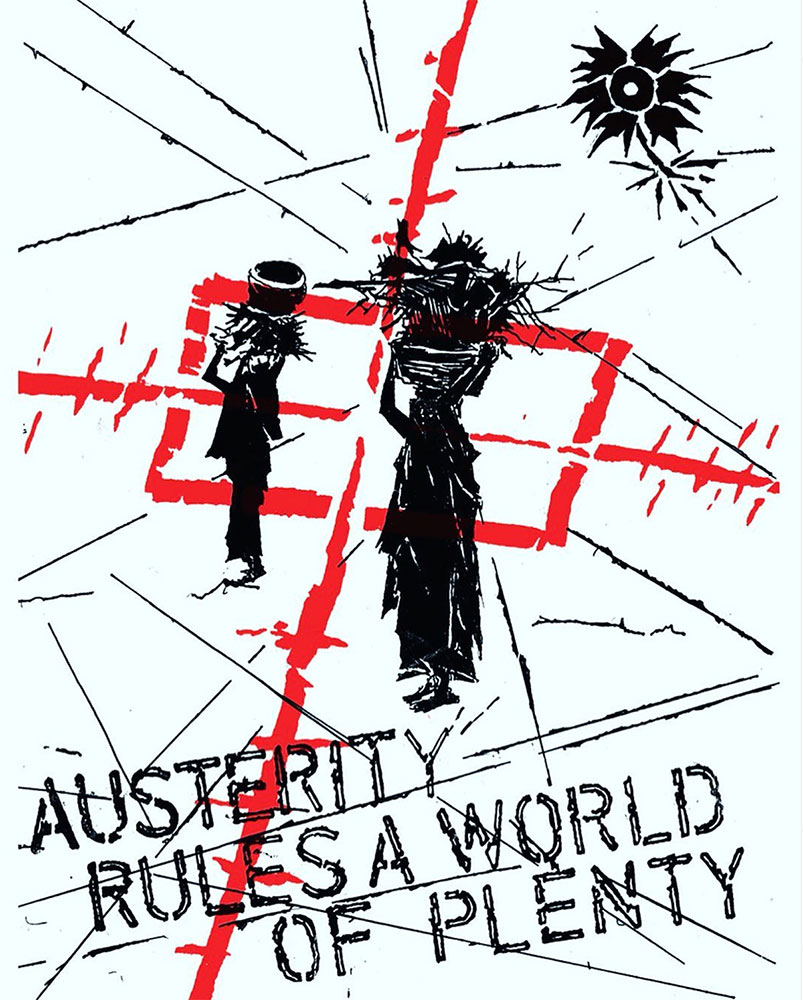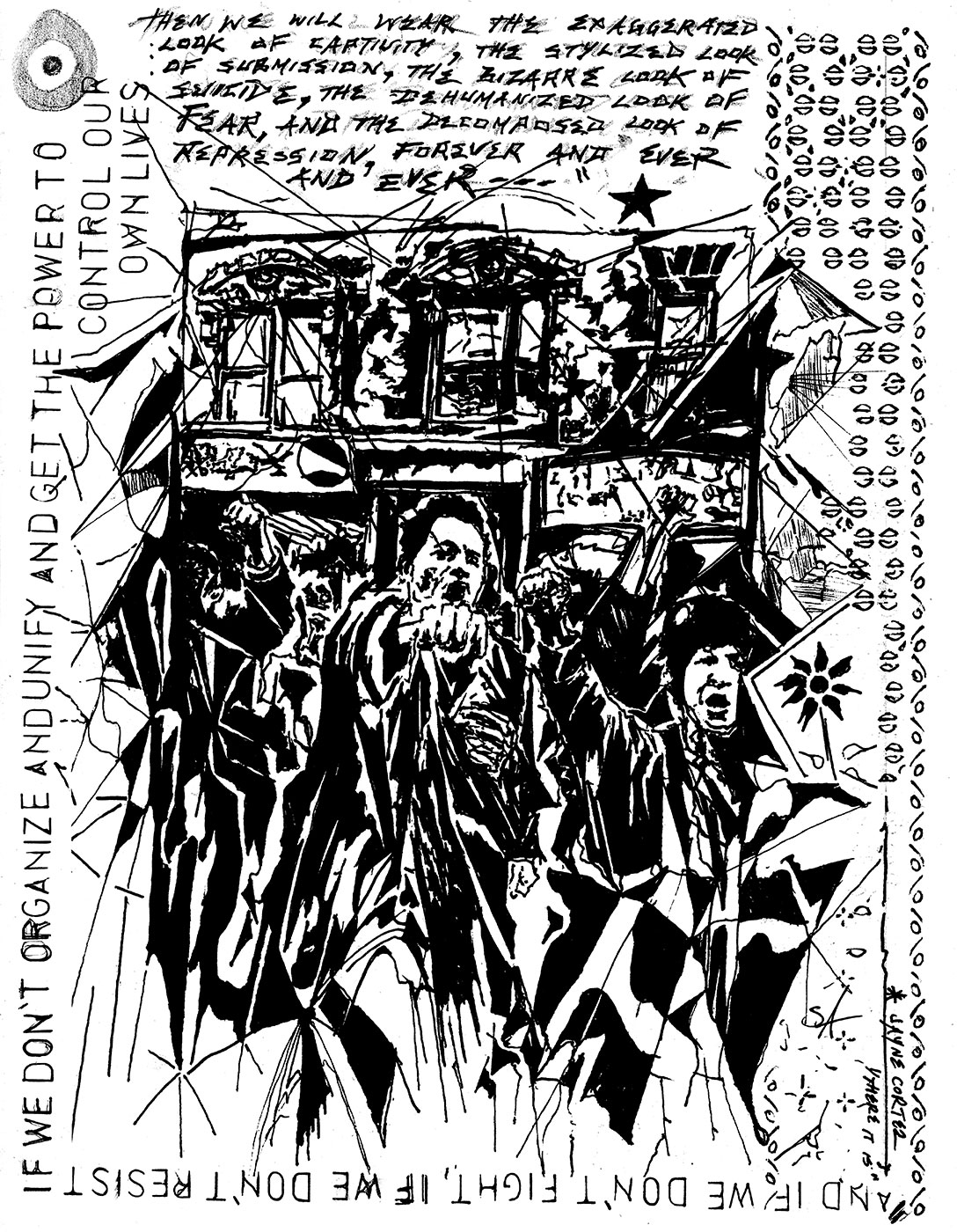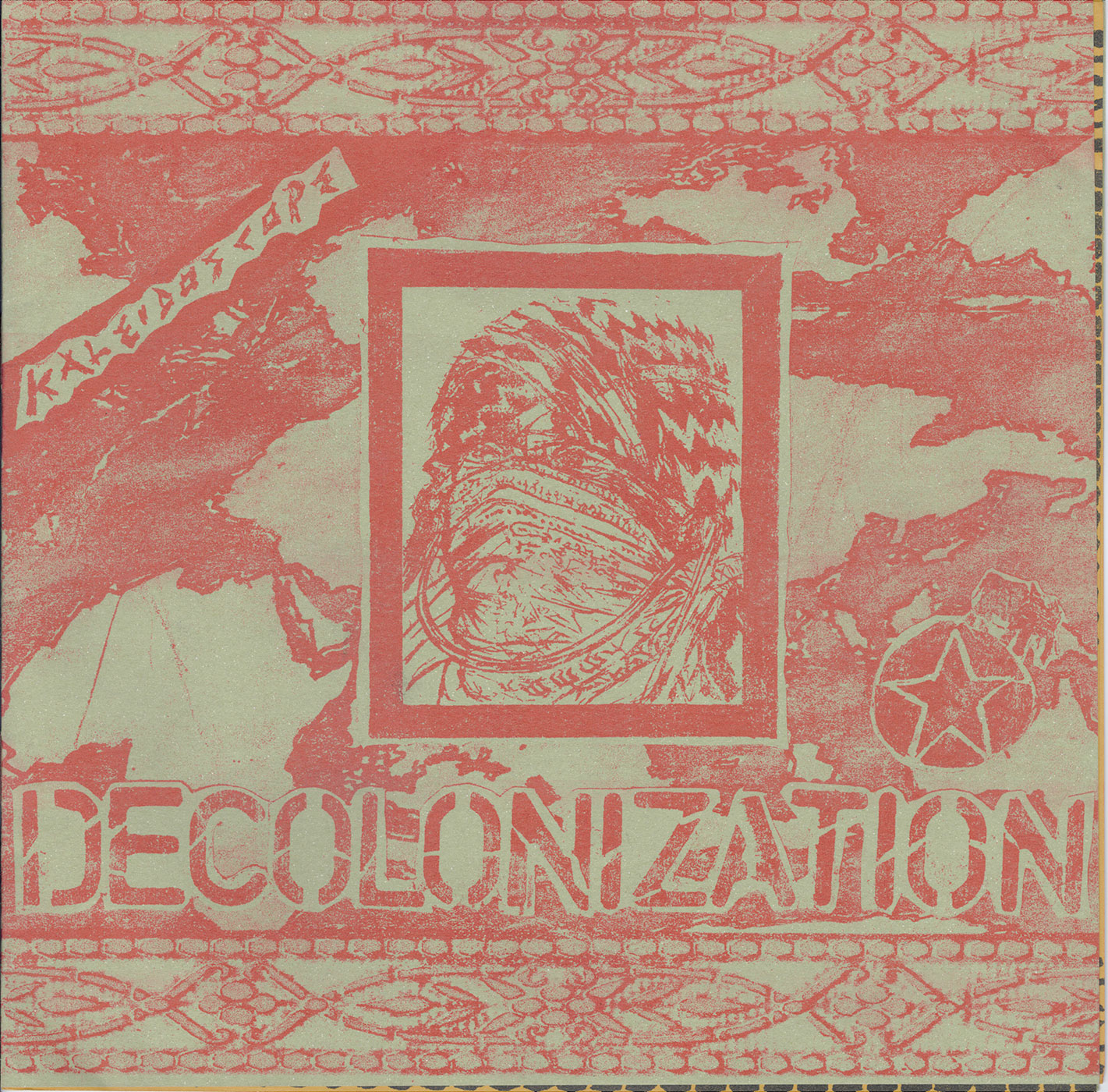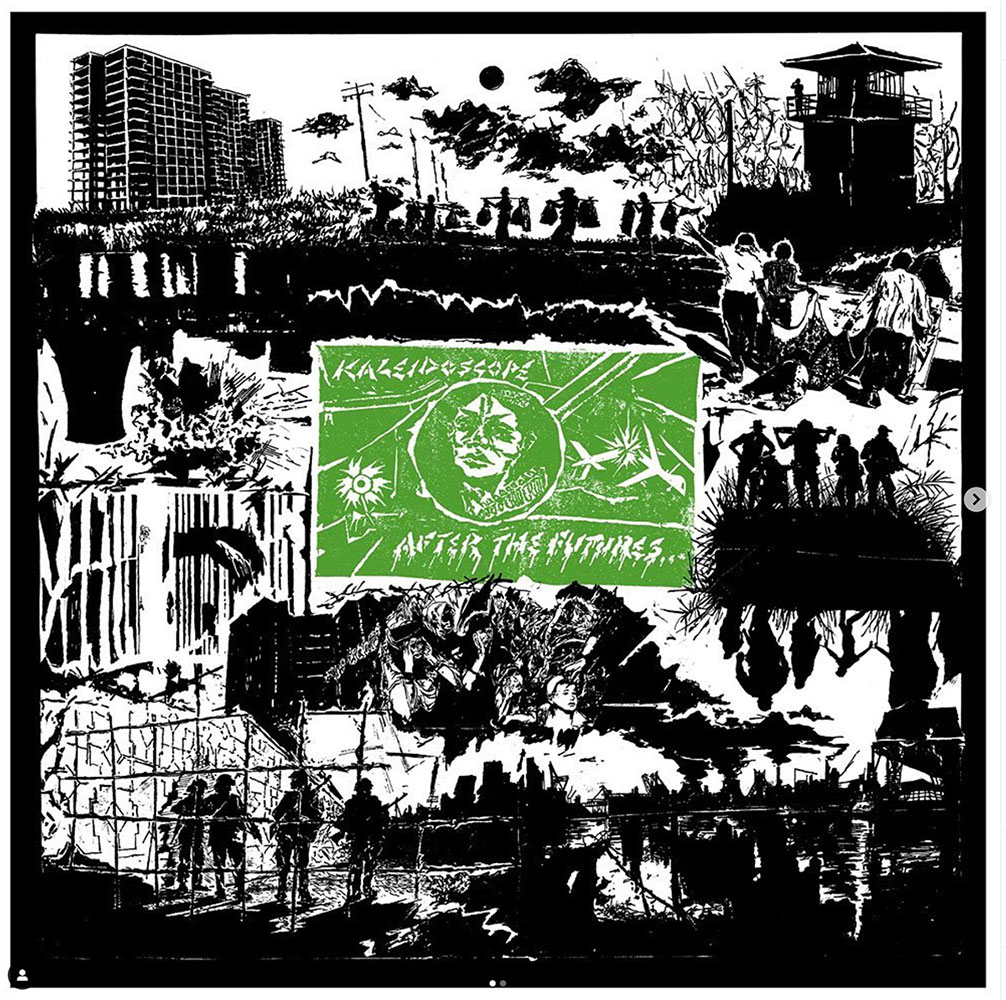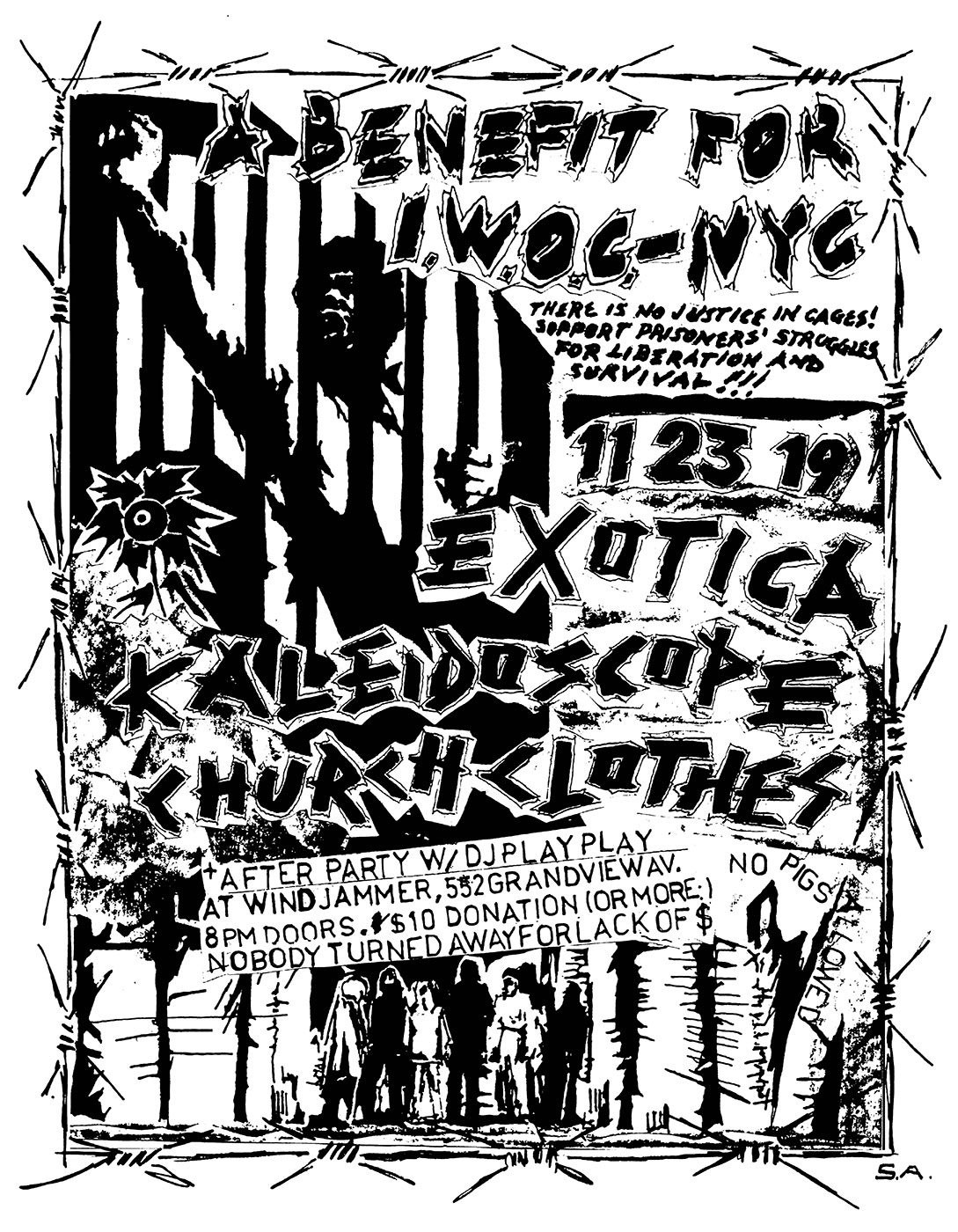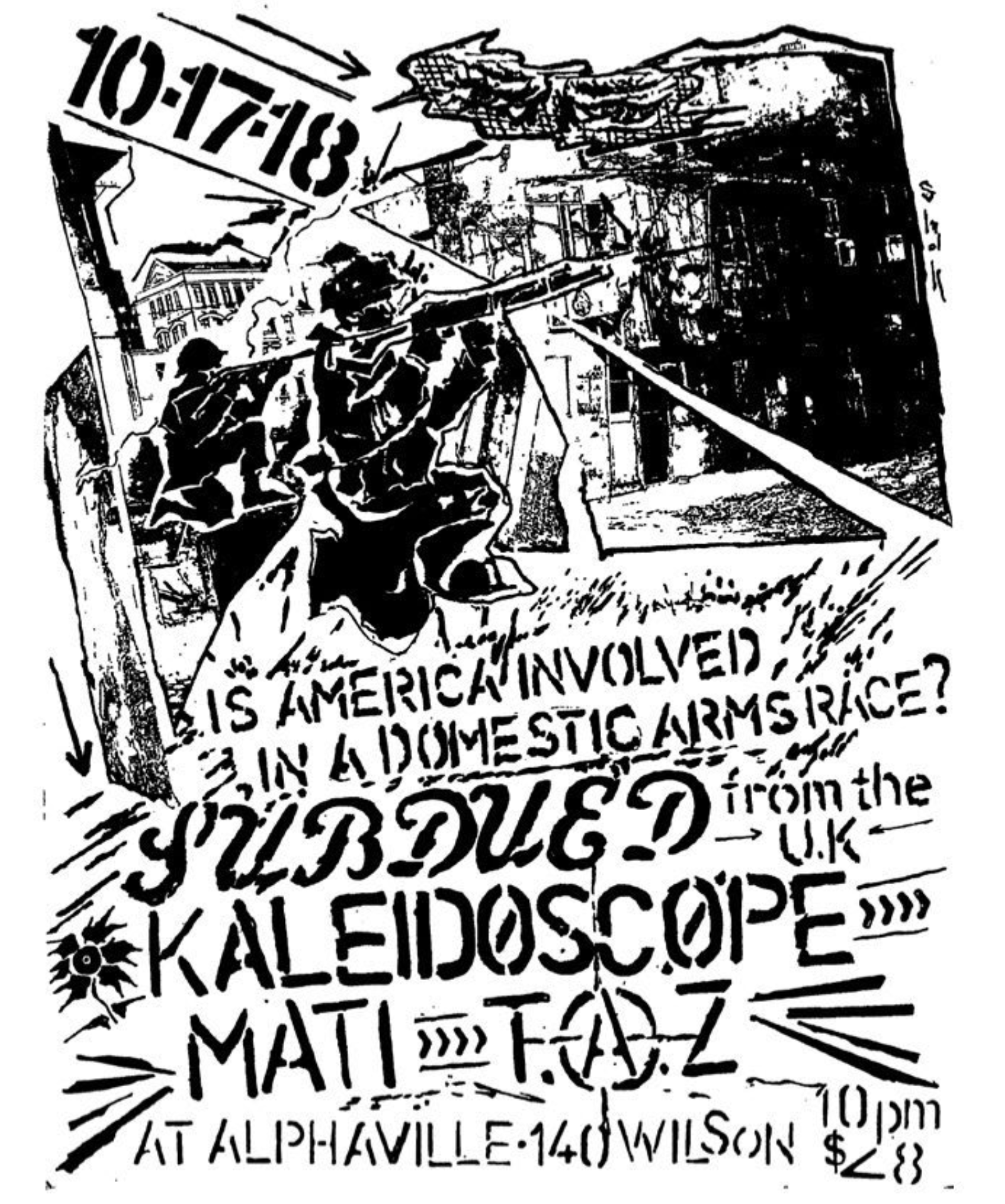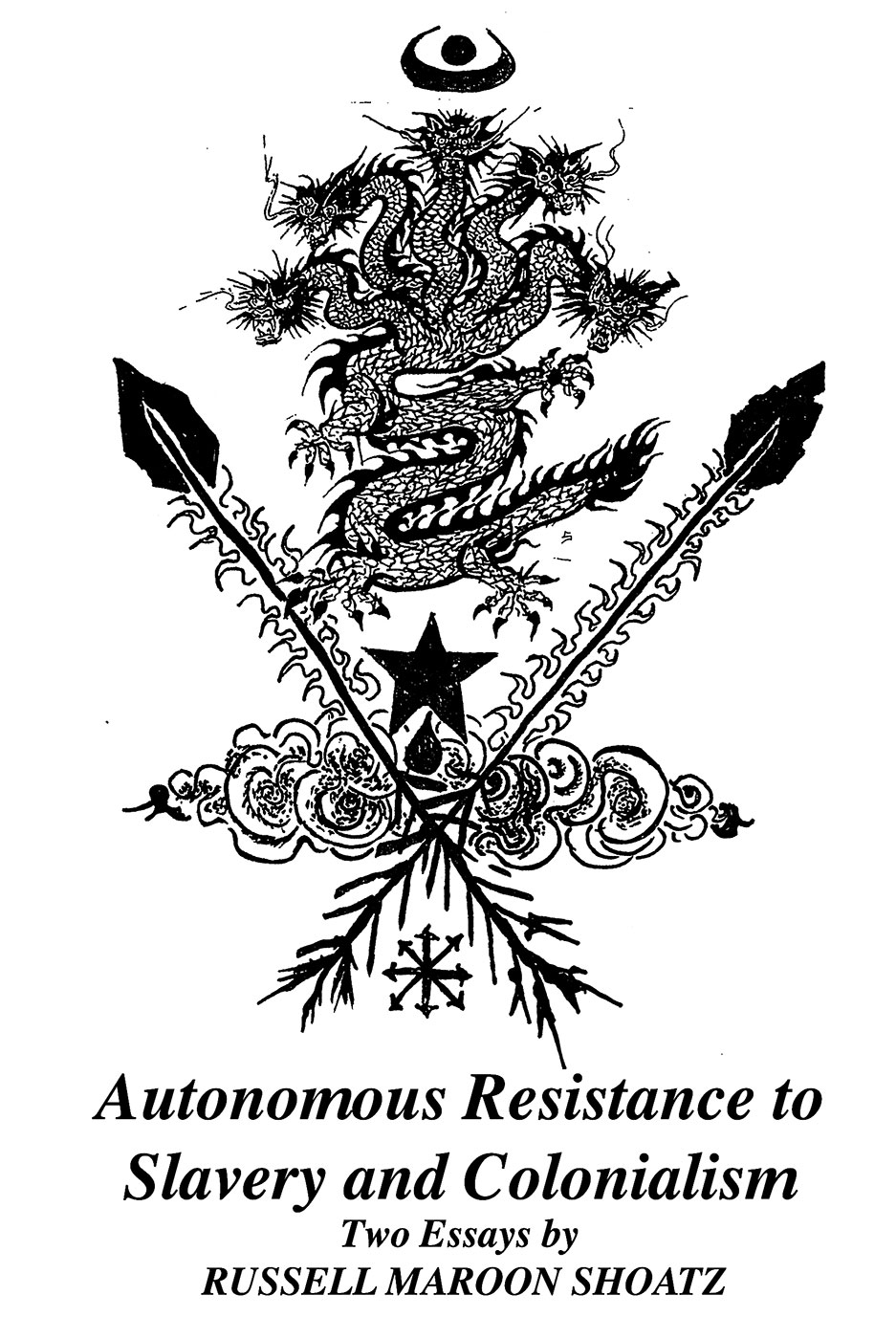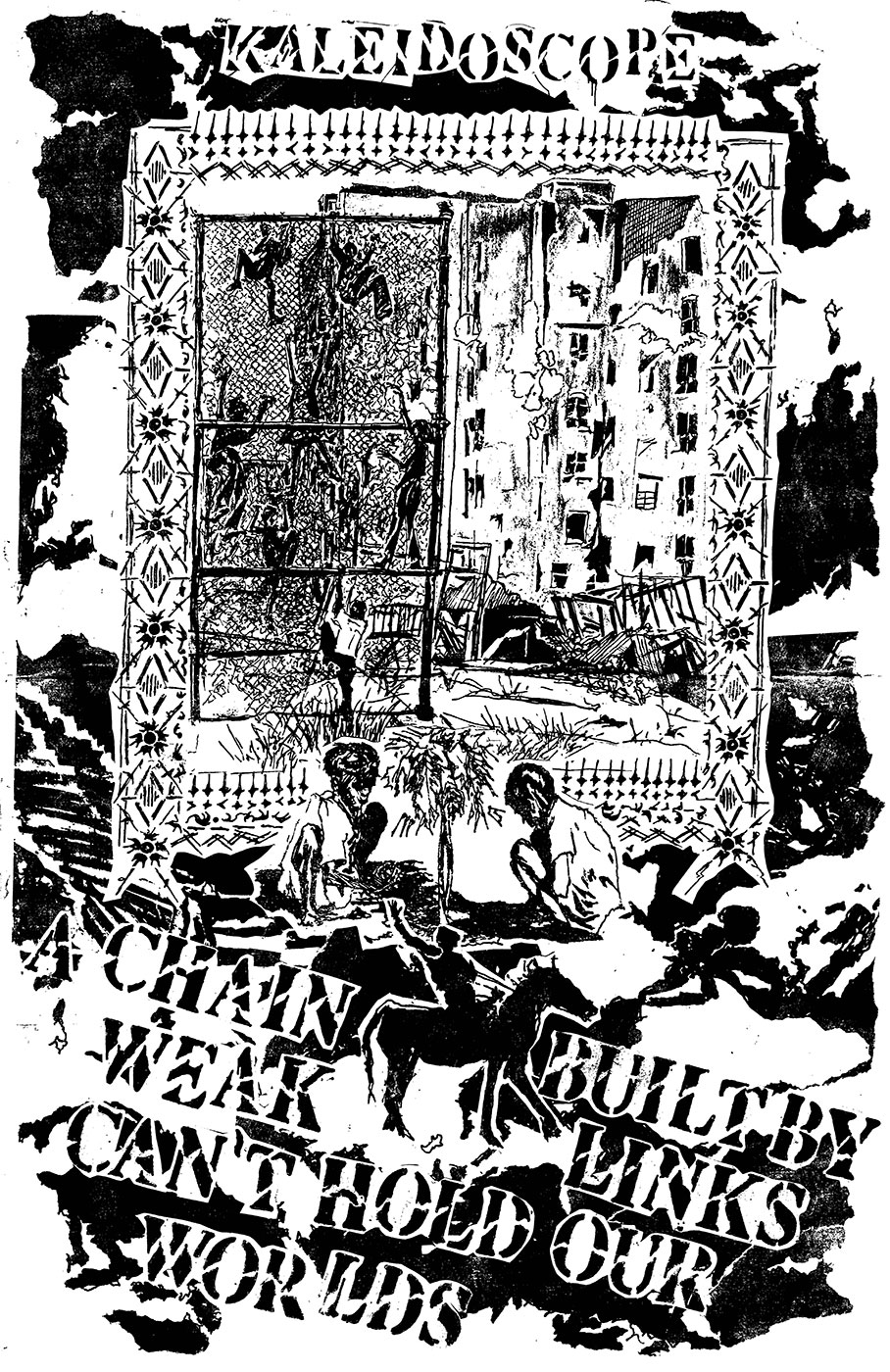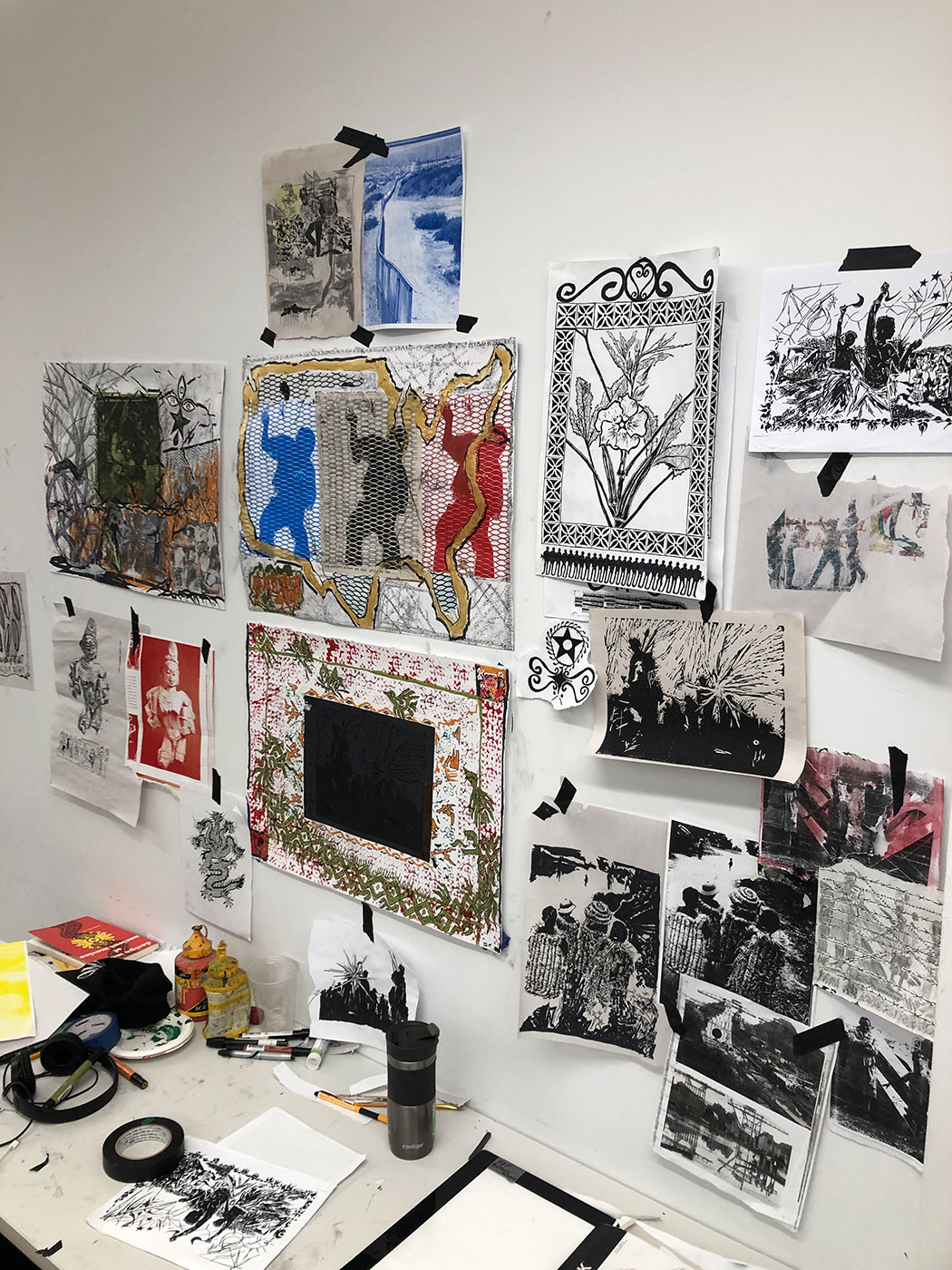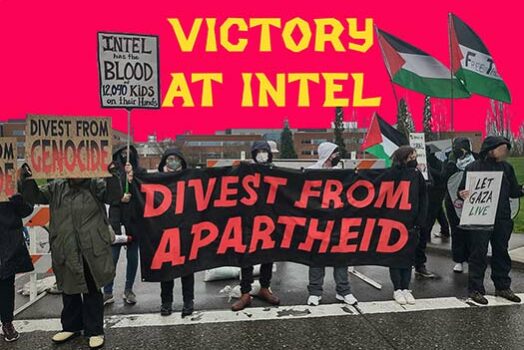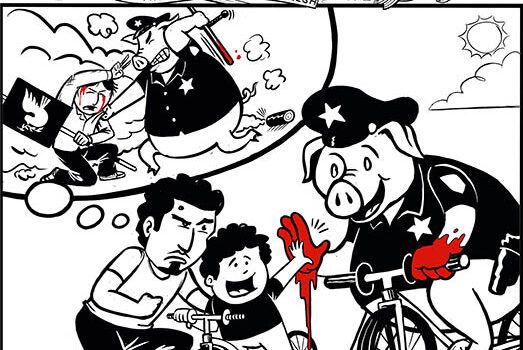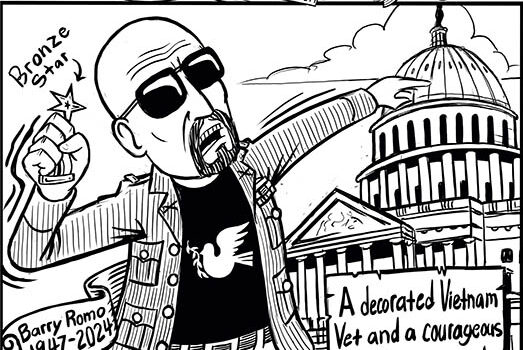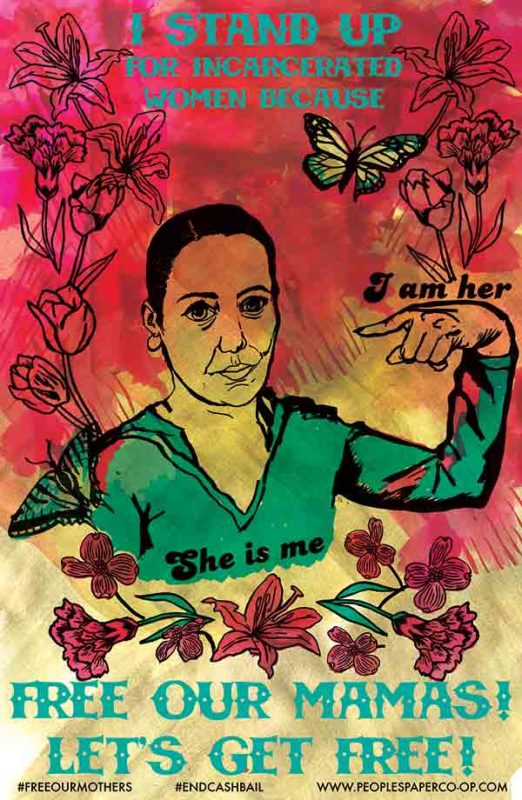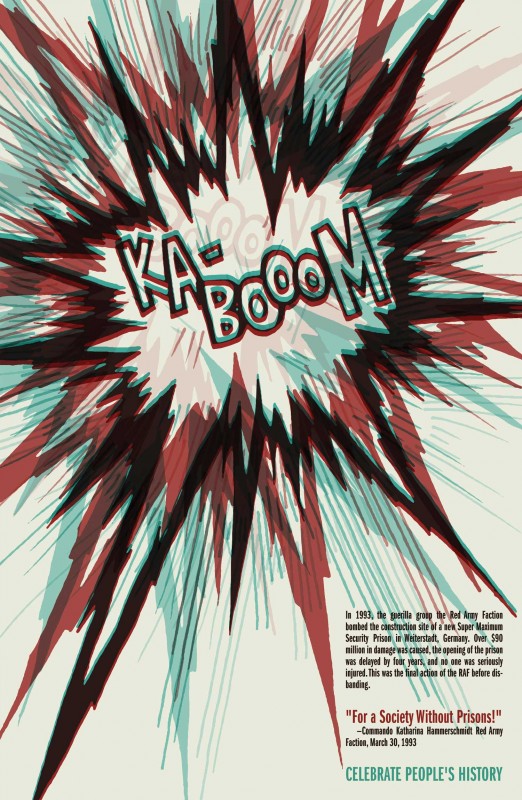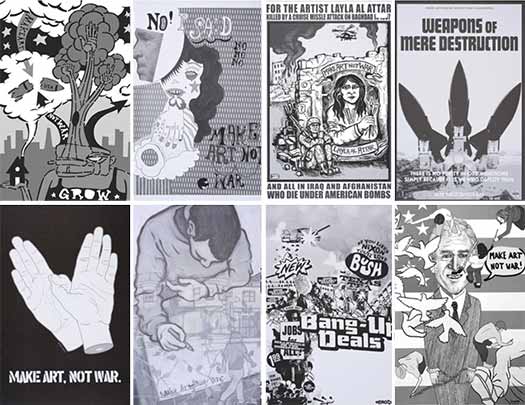This is the third post in an ongoing interview series with current political artists working around the world. We are excited this time to feature Shiva, a political artist from New York City. Shiva makes posters, graphics, zines, and plays and sings in the punk band Kaleidoscope. Their art often uses the framework of anarcho-punk (wrap-around text, heavy black and white, cut and paste, many stencil fonts) but without nostalgia, creating a unique and militant aesthetic in dialogue with liberatory politics and our constant global crisis. You can see below that Shiva disagreed with my characterization of their work as dense, so I will revise that and describe their work as complex with a playful and experimental design sense that I’ve found to be sharp, powerful, and thoughtful.
Will you tell us a little about yourself? Who are you? Where do you live?
My name is Shiva, I’m an artist and educator, I live in Sunset Park, Brooklyn. I am from the suburbs of NYC originally, I grew up immersed in the NYC punk scene from my early teens and I still move in those waters. I work as a teaching artist at a middle school in Fort Greene.
What is important for you to convey in your artwork? What ideas or philosophies is your work built on?
I aim to make revolutionary abolitionist art. I study the living history of insurgent movements against capital and confinement, especially anti-colonial and anti-imperialist movements, and try to convey that process of study in my art. Sometimes directly, honoring and depicting specific moments and movements, but often in more abstract ways. My work is built on the idea that nobody is free until everyone’s free, which means the destruction of imperialist rule and the liberation of oppressed and dispossessed people all around the world. And that means not liberation by way of the work of saviors but the people themselves, obviously. That general principle informs efforts in a lot of different directions artistically, and sometimes I get lost in my intentions. Being asked or otherwise inspired to make stuff for particular efforts or moments/purposes shakes me out of that fog though.
Your layout and design work is super dense. Is this a deliberate process? intuitive? experimental?
I learned layout and design from making a punk zine by hand as a teenager so that’s just baked into my design sensibility, I guess. I don’t see my stuff as that dense, but insofar as it is I would also say it’s a function of working by entirely by hand, and not having either the patience or the training to be able to make things ultra-precise. So, I guess I’d say it’s more intuitive and experimental. I started learning digital tools early last year, and I appreciate many styles of design, so I’ve been messing with more space sometimes as well.
Can we walk through one or two images- for example ‘Long Live Intifada’ and ‘Free Mutulu Shakur’. I can see that the icons and symbols used for both of these were very specific. How and why did you choose these elements? How did everything come together?
The “Long Live Intifada” flyer is the most ‘on-the-nose’ deliberate I’ve been with design choices, and I’m proud of it in that. There’s the color-coding of that famous image of the Palestinian kid facing down the Israeli tank, the boy and the landscape being in Palestinian colors and the tank being in Israeli colors. The border around it is made from Olive branches, which is another Palestinian national symbol, it represents Palestinian sumud [steadfastness/resilience] and their deep-rooted relationship to the land. It’s also a world symbol of peace and a crop that comes under characteristically vicious and belligerent attack by Israeli settler colonists. I really like working with other language scripts even though I’m shamefully monolingual, so I overlaid ‘Intifada’ in Arabic script with the roman alphabet stencil text. That poster, like some others I made around Black Liberation and Police & Prison Abolition, was made for street protests. I made it to pass out and show solidarity at Palestinian solidarity demonstrations in Bay Ridge, Brooklyn. A dear friend and co-conspirator made it possible for me to have a bunch of full color copies of that for cheap. My proudest moments were giving a handful to the workers at Al-Aqsa Bakery and them being into it and handing it to some teen girls who organize with WOL Palestine who told me in that great backhanded teen way “this is *actually* pretty cool”.
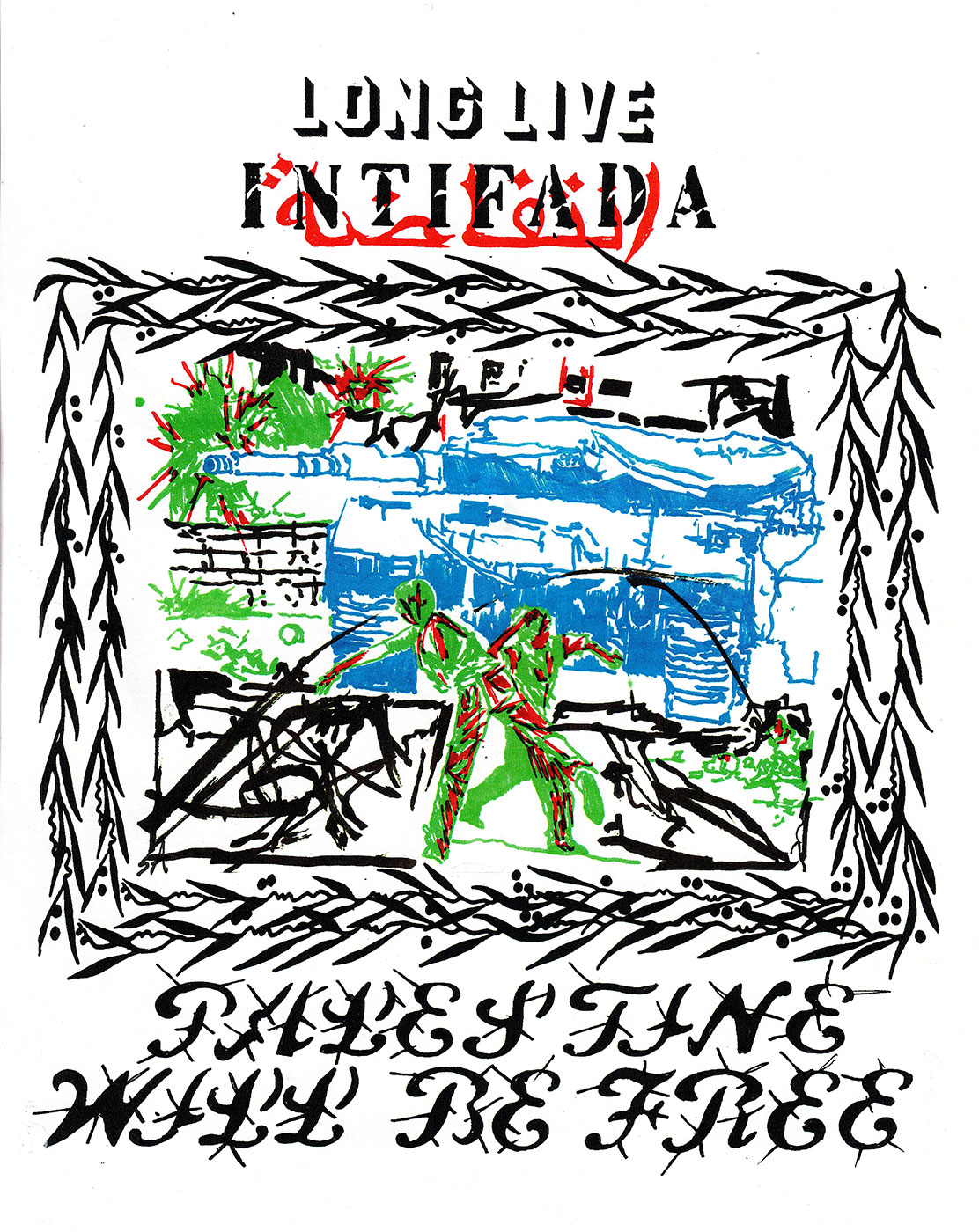
The “Solidarity Means Care”/ Mutulu Shakur flyer is for a specific event and was freer associative. I’ve been putting a lot of folk and textile iconography into my art because I’ve loved it since I was a kid. Around the same time, myself and a few friends have been really inspired by Adinkra symbols from West Africa/Ghana and appreciating how those symbols are forged into the architectural fabric of NYC. The Sankofa, the symbol which wraps around the image of Shakur, is one that’s super prevalent in NYC iron gates and it represents “returning to the past to make a better future”. That idea really resonates with me and informs a lot of how I get motivated as an artist and an educator, so I’ve been incorporating it pretty frequently. The yin-yang and ear-seed acupuncture symbols are direct nods to Acupuncture Detox, which was formally innovated by Shakur and the Young Lords/Black Panthers in NYC. The rest— like burning stars and stenciled textile patterns and the concrete cross/flower pattern that reminds everyone I know of Third World architecture/decoration— is just free associative, but it’s loaded and specific. The burning star is a nod to the Revolutionary Abolitionist Movement.

How do you get your work seen? Street art? Art shows? Instagram? Protests? Paste-ups? Punk shows?
All of the above, to an extent, with the exception of street art. I wish I did more of anything else other than instagram, I feel very negative about that soul sucking corporate platform. I’d like to do more art shows and installations, more work for protests, whatever channels where it isn’t just metadata for meta at the end of the day.
Are you working on any projects right now that you are excited about and want to share?
I am! I’m planning SHADOW COMMS #1, which will be an extended meditation on South Asian political struggles inspired by the victorious Farmer’s Strike, but it’ll be going into a lot of other corners that I’ve been poking around in for a while. I am also currently an artist-in-residence at the Elizabeth Catlett Art Space at The People’s Forum. I’ve been learning more about and practicing printmaking there and following through on longstanding intentions to make larger standalone mixed-media pieces.
What’s the relationship between your 2d artwork and your real time work as a musician? Or maybe, tell us about your music and the ways in which your art and music inform one another.
Visual art came before music for me, but DIY punk gave me the motivation and platform to find a voice in general, including with visual art. Up until very recently, my visual arts efforts were mostly dedicated to musical projects, with some exceptions, but I’ve daydreamed for a while about doing different things with visual expression, and focusing on it more. They’ve been very closely braided for a while, but I’m kind of in the mode of parsing them apart and focusing more on visuals these days. That being said, nothing can replace the joy and thrill of producing music.
Who are some artists (living or dead) that have inspired you, that everyone should know about?
Emory Douglas, Sue Coe, Madam Binh Graphics Collective, OSPAAAL, Gee Vaucher, Lemi Ghariokwu, Pedro Bell, I can’t think of other individuals off the top of my head but the list is long… I am also very inspired by photography and design, and traditional/decorative/folk arts. I love how all of these factors play into the making of political art. I’ve been really inspired by a book of Anti-Apartheid Art from South African Townships sent to me last year by a dear friend, and I love finding out about new movements, collectives, and graphic histories whenever I can.
Anything else you want to add?
Thank you so much for interviewing me, it’s an honor!
Where can people find your work? Where can people find your zine
My zine SHADOW COMMS is available at Brown Recluse Zine Distro and at Printed Matter, and I post irregularly @shadowcomms about where my work shows up. Hit me up at shadowcomms@riseup.net if you want to be in touch or you’d like graphic/art work from me.

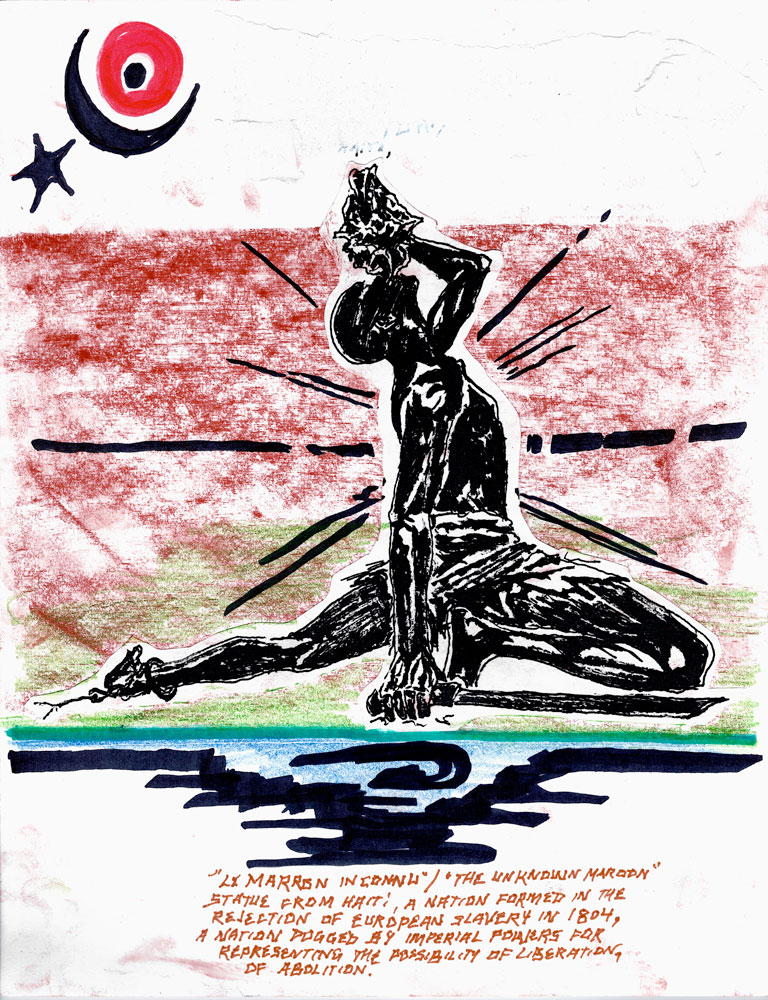
Signal: A Journal of International Political Graphics & Culture is the collective project of Josh MacPhee and Alec Dunn. All copies of Signal are available for sale here on Justseeds.
Interview conducted via email in December, 2021.
